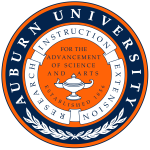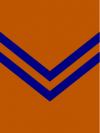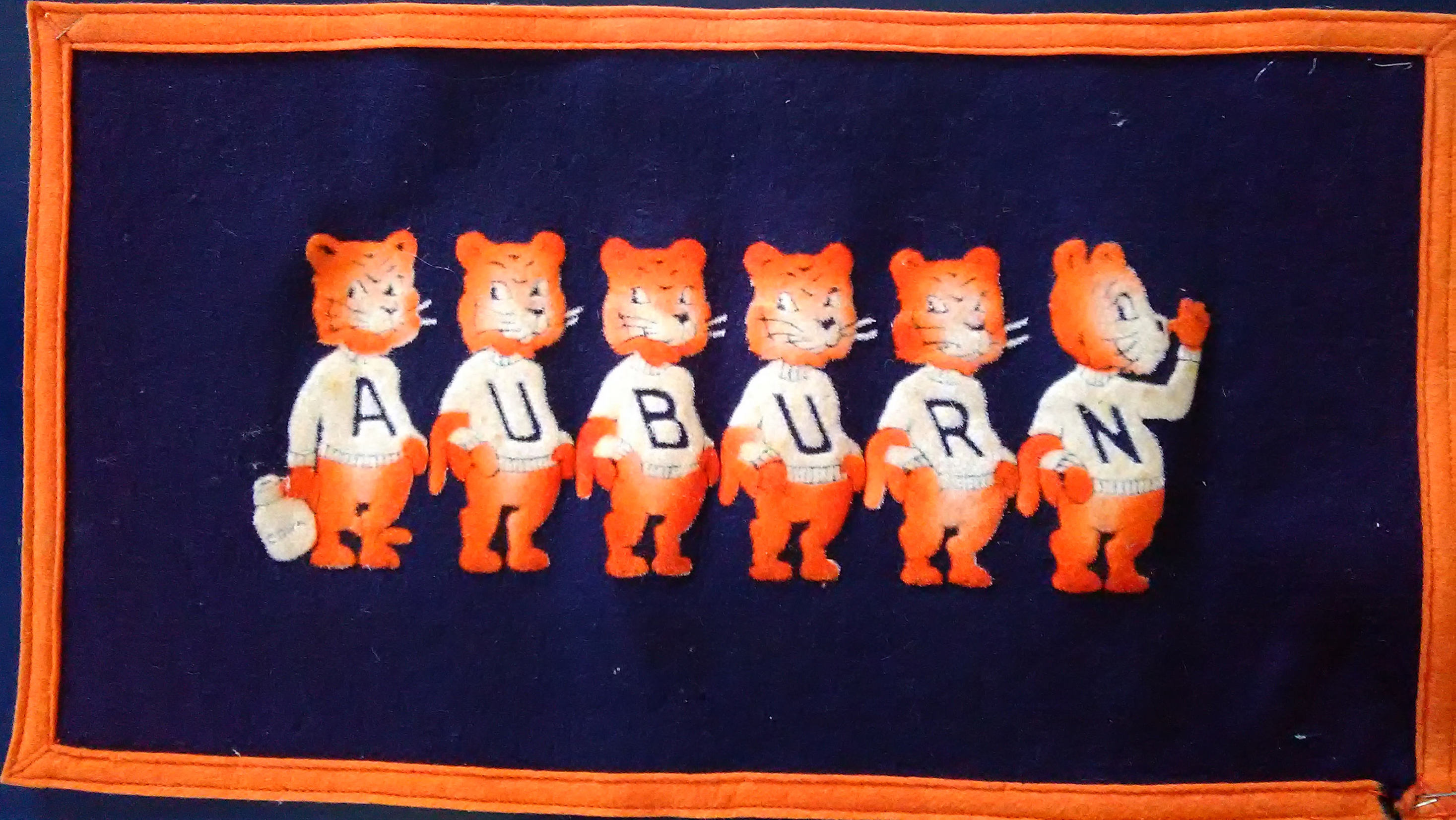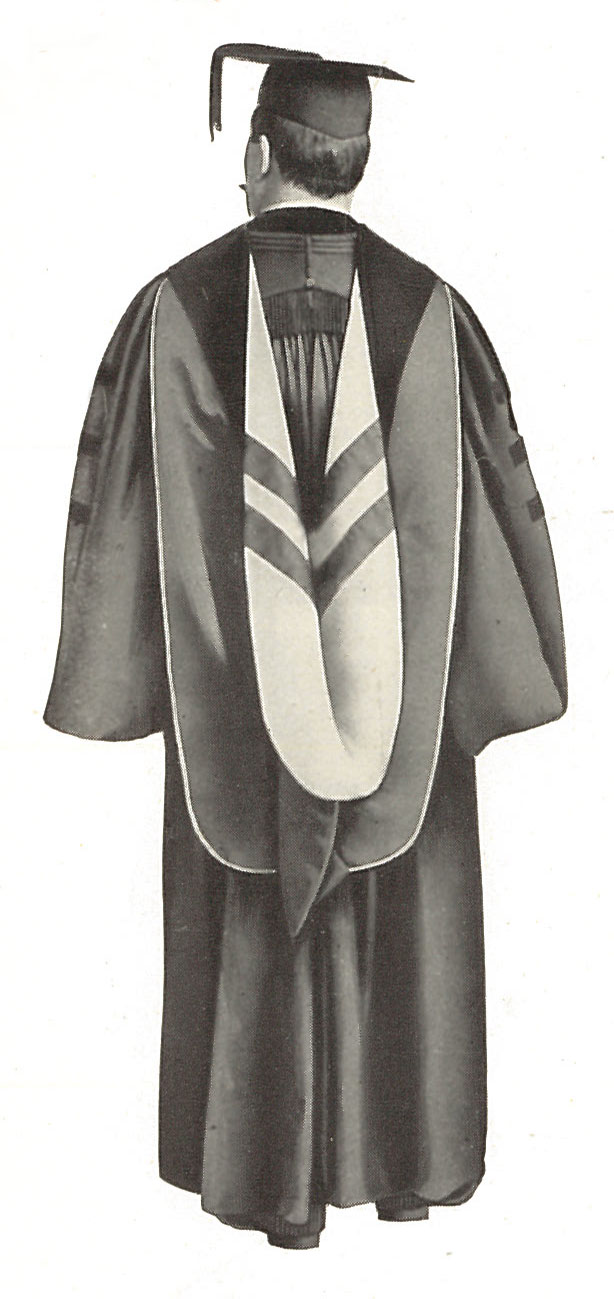Auburn University
Alabama
1856
Formerly “Agricultural and Mechanical College of Alabama” and “Alabama Polytechnic Institute”





During the late 1800s the college colors of the Agricultural and Mechanical College of Alabama were yellow, white, and blue. But when football was introduced as a sport at the college in 1892 it became fashionable to have only two school colors, not three. Alabama A&M’s first game was against the University of Georgia, so the coaches of each team encouraged their fans to wear colored clothing to the game to show their loyalty to one team or the other.
George Petrie, the football coach of Alabama A&M, had graduated from the University of Virginia, which had recently (1888) adopted orange and navy blue as its new school colors. So Petrie encouraged Alabama A&M fans to wear orange and navy blue to the game and ordered uniforms in those colors for his team. Alabama A&M’s shade of orange was deeper and darker than Virginia’s shade of orange, so when the Alabama Polytechnic Institution’s Board of Trustees voted to make orange and navy blue the official colors of the college in 1949, they described the shades as “ultramarine blue” and “golden orange”. Today these shades are sometimes described as navy blue and burnt (or “slightly burnt”) orange.
Citations in the World Almanac (listed by cover date; color information is from the previous year): white/blue/yellow (1895), orange/blue (1896-1935)
The chevron was by far the most common heraldic division the Intercollegiate Bureau of Academic Costume (IBAC) employed to divide the two or three colors in an institution’s hood, but beginning in 1895 the “double chevron” was also used quite frequently. The typical width of a normal chevron was between three and four inches, but the double chevron pattern used two chevrons of about 1½ inches in width placed two inches apart so that the color of the hood lining showed between them.
To avoid duplicating the hoods already assigned to Lincoln University in Pennsylvania, Gettysburg College, and the University of Florida (at that time, all cited as orange with a navy blue chevron) the IBAC assigned Alabama Polytechnic Institute a hood lining that was orange with two navy blue chevrons no later than 1927, according to an IBAC list from that period. But because the Intercollegiate Bureau did not carefully distinguish between orange and burnt orange in their early lists (see, for instance, the hood lining descriptions of Lincoln University and Hendrix College), on paper Alabama Polytechnic’s assignment appeared to duplicate the hood linings the Bureau had already assigned to Grand Island College (orange with two navy blue chevrons; this college merged with Sioux Falls College in 1931) and Wheaton College in Illinois (orange with two Yale blue chevrons).
This was not an accurate description of Auburn’s shade of orange, but in an attempt to rectify this apparent duplication the IBAC dropped the second chevron and modified Auburn’s hood colors in the late 1940s or 1950s. A list compiled by Kevin Sheard in Academic Heraldry in America (1962) described Auburn’s hood lining as burnt orange with a single royal blue (dark blue) chevron, which was a description also found in a 1972 IBAC list – a duplication of the hood assigned to Lincoln University. A 1969 Intercollegiate Bureau list had said nearly the same thing, except that it cited Auburn’s hood lining as being orange, not burnt orange – a duplication of the hood assigned to the University of Florida.
These later revisions were unnecessary. To avoid confusion with the hood linings the IBAC assigned to the University of Florida (orange with a navy blue chevron), Wheaton College (orange with two Yale blue chevrons), and Lincoln University (burnt orange with a navy blue chevron) the IBAC only needed to more precisely describe the shade of Auburn’s orange in its 1927 IBAC citation: burnt orange with two navy blue chevrons.
